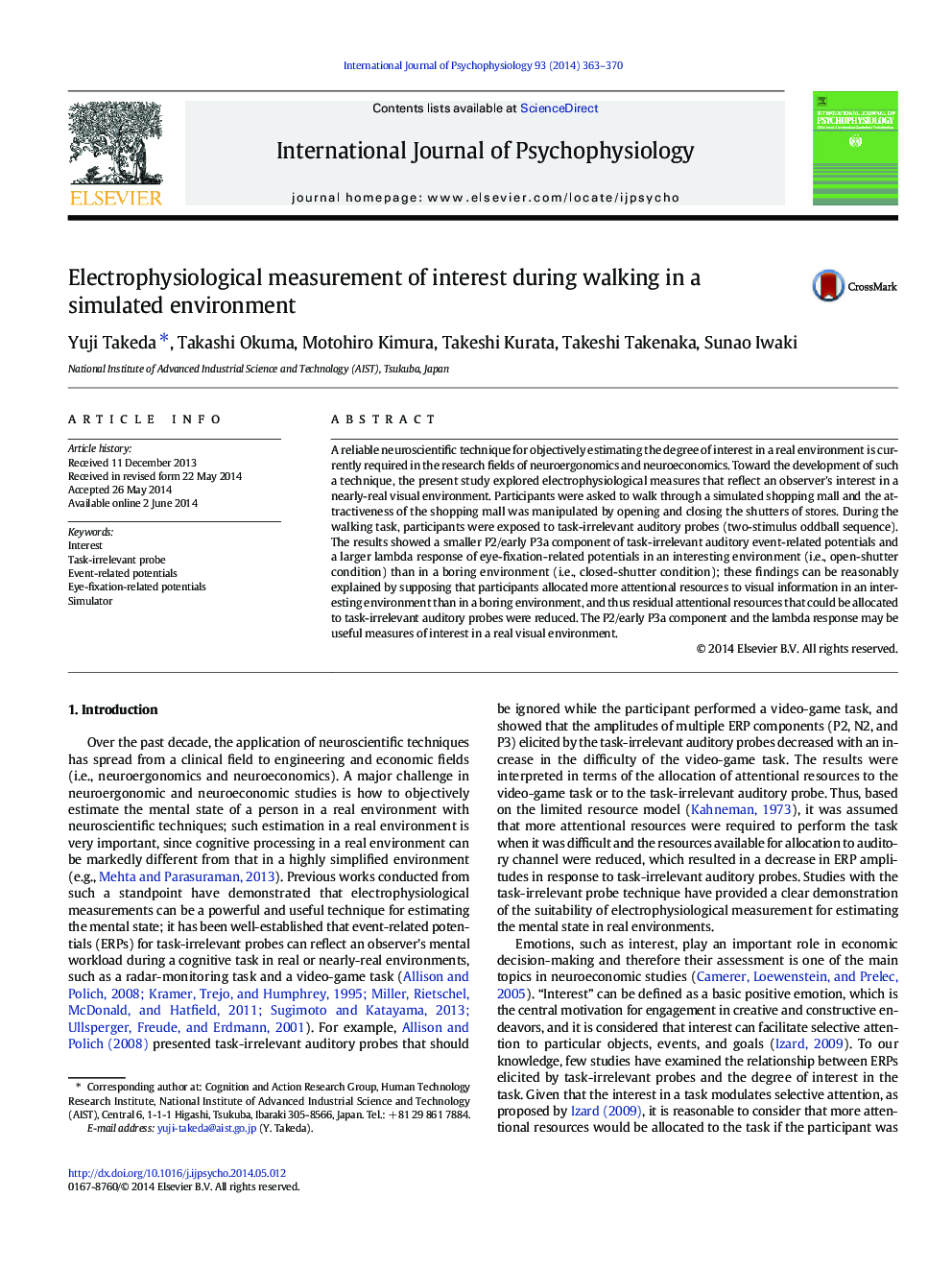| Article ID | Journal | Published Year | Pages | File Type |
|---|---|---|---|---|
| 930256 | International Journal of Psychophysiology | 2014 | 8 Pages |
•Electrophysiological measures that reflect interest in an environment were explored.•Task-irrelevant auditory probes were given during walking in a simulated mall.•The P2/eP3a component of auditory ERP decreased with the observer's interest.•The lambda response of EFRP increased with the observer's interest.•These components can be mutually complementary measures of an observer's interest.
A reliable neuroscientific technique for objectively estimating the degree of interest in a real environment is currently required in the research fields of neuroergonomics and neuroeconomics. Toward the development of such a technique, the present study explored electrophysiological measures that reflect an observer's interest in a nearly-real visual environment. Participants were asked to walk through a simulated shopping mall and the attractiveness of the shopping mall was manipulated by opening and closing the shutters of stores. During the walking task, participants were exposed to task-irrelevant auditory probes (two-stimulus oddball sequence). The results showed a smaller P2/early P3a component of task-irrelevant auditory event-related potentials and a larger lambda response of eye-fixation-related potentials in an interesting environment (i.e., open-shutter condition) than in a boring environment (i.e., closed-shutter condition); these findings can be reasonably explained by supposing that participants allocated more attentional resources to visual information in an interesting environment than in a boring environment, and thus residual attentional resources that could be allocated to task-irrelevant auditory probes were reduced. The P2/early P3a component and the lambda response may be useful measures of interest in a real visual environment.
